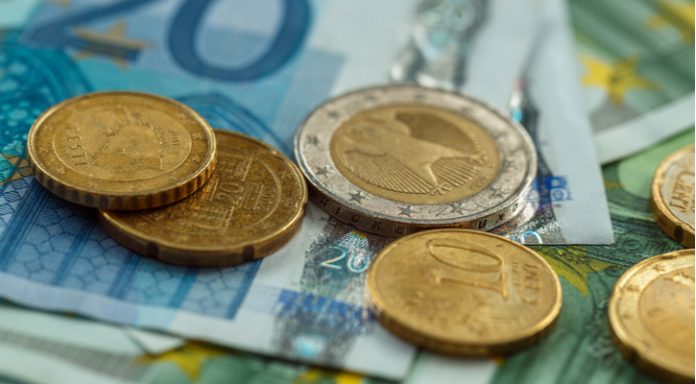The dollar made modest gains versus the euro in the previous session after the release of the FOMC minutes. The euro US dollar exchange rate dropped to a session low of US$1.1085. The pair is extending yesterday’s losses in early trade on Thursday.
| What do these figures mean? |
| When measuring the value of a pair of currencies, one set equals 1 unit and the other shows the current equivalent. As the market moves, the amount will vary from minute to minute.
For example, it could be written: 1 EUR = 1.12829 USD Here, €1 is equivalent to approximately $1.13. This specifically measures the euro’s worth against the dollar. If the U.S. dollar amount increases in this pairing, it’s positive for the euro. Or, if you were looking at it the other way around: 1 USD = 0.88789 EUR In this example, $1 is equivalent to approximately €0.89. This measures the U.S. dollar’s worth versus the euro. If the euro number gets larger, it’s good news for the dollar. |
The euro was relatively quiet in the previous session as investors looked ahead to a slew of eurozone data today and the release of the minutes from the European Central Bank.
Last week, data showed that the German economy slipped into contraction in the second quarter. Euro investors will be keen to see how the German economy is holding up in the third quarter, particularly the manufacturing sector.
German manufacturing PMI will provide market participants with an idea of the health of this crucial sector for the German economy. Analyst are predicting that the activity in the German manufacturing sector contracted again in August as the US — Sino trade dispute intensifies. Analysts are forecasting a reading of 43, down from 43.2. The figure 50 separates expansion from contraction.
Weak German data could fuel recession fears for Europe’s largest economy. This would boost investor expectations that the European Central Bank will look to cut interest rates when it meets in September.
| Why do interest rate cuts drag on a currency’s value? |
| Interest rates are key to understanding exchange rate movements. Those who have large sums of money to invest want the highest return on their investments. Lower interest rate environments tend to offer lower yields. So, if the interest rate or at least the interest rate expectation of a country is relatively lower compared to another, then foreign investors look to pull their capital out and invest elsewhere. Large corporations and investors sell out of local currency to invest elsewhere. More local currency is available as the demand of that currency declines, dragging the value lower. |
US PMI Data Up Next
The minutes from the latest Federal Reserve monetary policy meeting gave the dollar a modest boost in the previous session. The minutes were from the FOMC in July, when the Fed cut interest rates for the first time in a decade. Investors were looking for signs as to whether the interest rate cut was a “mid cycle adjustment” or the start of a rate cutting cycle.
The minutes showed that the views among the policy makers varied broadly. Some were in favour of more aggressive easing whilst others were resisting any move at all. However, most viewed the cut as part of a mid-cycle adjustment in response to recent changes in the economic outlook. The fact the dollar moved higher indicates that dollar investors were expecting to see a more dovish message.
Today investors will look towards a slew of US PMI data for further clues as to the health of the US economy. Should the data be stronger than analysts forecast, concerns over a potential slowdown in the US economy could ease, lifting the dollar further.
| Why does strong economic data boost a country’s currency? |
| Solid economic indicators point to a strong economy. Strong economies have strong currencies because institutions look to invest in countries where growth prospects are high. These institutions require local currency to invest in the country, thus increasing demand and pushing up the money’s worth. So, when a country or region has good economic news, the value of the currency tends to rise. |





